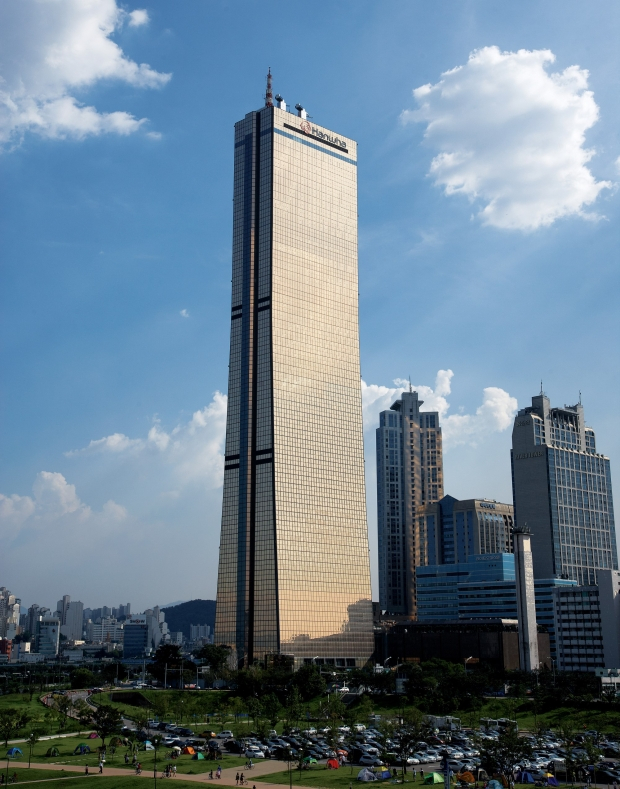Insurance
Insurers rush to bolster equity capital to boost solvency
The firms are issuing subordinated and perpetual bonds and selling real estate to minimize the impact of new, stricter regulations
By Mar 24, 2022 (Gmt+09:00)
2
Min read
Most Read
LG Chem to sell water filter business to Glenwood PE for $692 million


Kyobo Life poised to buy Japan’s SBI Group-owned savings bank


KT&G eyes overseas M&A after rejecting activist fund's offer


StockX in merger talks with Naver’s online reseller Kream


Mirae Asset to be named Korea Post’s core real estate fund operator



South Korea's key insurers are rushing to increase their equity capital ahead of two new solvency regulations set to take effect from Jan. 1, 2023. To boost their financial status and increase their risk-based capital (RBC), Korean insurers are scurrying to amass ample capital by issuing bonds and selling properties.
Korea’s Nonghyup Life Insurance Co. will issue subordinated bonds worth 300 billion won ($246.1 million) and Heungkuk Life Insurance Co. will issue perpetual bonds worth 40 billion won ($32.8 million) by the end of this month, the Financial Supervisory Service (FSS) disclosed on March 23.
The two firms haven't issued subordinated or perpetual bonds for years -- this is the first time NH Life has publicly issued subordinated bonds since 2017; the last time Heungkuk publicly issued perpetual bonds was in 2013.
“We decided on the issuance to secure capital before the new versions of International Financial Reporting Standards (IFRS 17) and Korean-Insurance Capital Standards (K-ICS) are introduced,” Heungkuk Life said on Wednesday. Korea's financial authorities recognize subordinated debt and perpetual debt as capital in a solvency assessment.
Under IFRS 17, Korean insurance companies will be required to measure both assets and liabilities at market price, instead of book value. That will lead to the increased value of liabilities and more spending to cover the increased risk. Korea’s financial authorities have encouraged insurers to issue subordinated or perpetual bonds to offset this, and as a result, the perpetual debt-to-capital ratio in the Korean insurance industry nearly doubled to 4.7% as of end-June 2021 from 2.4% as of end-2017.
The revised K-ICS is set to calculate the RBC ratio by evaluating insurance companies’ assets and liabilities based on market value. NH Life’s bond issuance is an effort to improve the ratio -- the insurer’s RBC ratio dropped to 210% at end-2021 from 287% at end-2020 as recent interest rate hikes led to a plunge in the company’s bond price.
Some insurers are selling their properties to increase their RBC ratios. Shinhan Life Insurance Co. sold its headquarters building Shinhan L Tower to affiliate Shinhan Alpha REITs for 279.8 billion won ($229.6 million) in September 2020, and put its Cheonan Training Institute on the market in late 2021. Hanwha Life Insurance is in the process of selling its office building in Sinseol-dong, Seoul. "A number of insurers will endeavor to increase solvency performance until the end of this year," an insurance industry source said.
The 53 Korean insurers’ net profit last year amounted to 8.27 trillion won ($6.8 billion), up 36.2% from 2020, in an FSS preliminary report. The combined net profit of the 23 insurers and 30 casualty insurers reached 3.94 trillion won and 4.33 trillion won, respectively.
Despite the improved performances, the insurers’ combined equity capital dropped to 134.61 trillion won last year from 143.03 trillion won in 2020. The sharp drop came as bond valuation gains decreased by 14.8 trillion won last year due to interest rate hikes.
Write to Tae-Ho Lee and Ho-Gi Lee at thlee@hankyung.com
Jihyun Kim edited this article.
More to Read
-
 Mergers & AcquisitionsKB Life, Prudential Life to complete merger by Jan 2023
Mergers & AcquisitionsKB Life, Prudential Life to complete merger by Jan 2023Mar 01, 2022 (Gmt+09:00)
1 Min read -
 ASK 2021Hanwha Life CIO says interested in infrastructure debts
ASK 2021Hanwha Life CIO says interested in infrastructure debtsOct 27, 2021 (Gmt+09:00)
1 Min read -
 InterviewHanwha Life to further tap into interest rate derivatives
InterviewHanwha Life to further tap into interest rate derivativesDec 22, 2020 (Gmt+09:00)
7 Min read -
 InterviewKyobo Life looks to invest in ESG bonds; calls for easing rules
InterviewKyobo Life looks to invest in ESG bonds; calls for easing rulesNov 15, 2020 (Gmt+09:00)
long read
Comment 0
LOG IN


